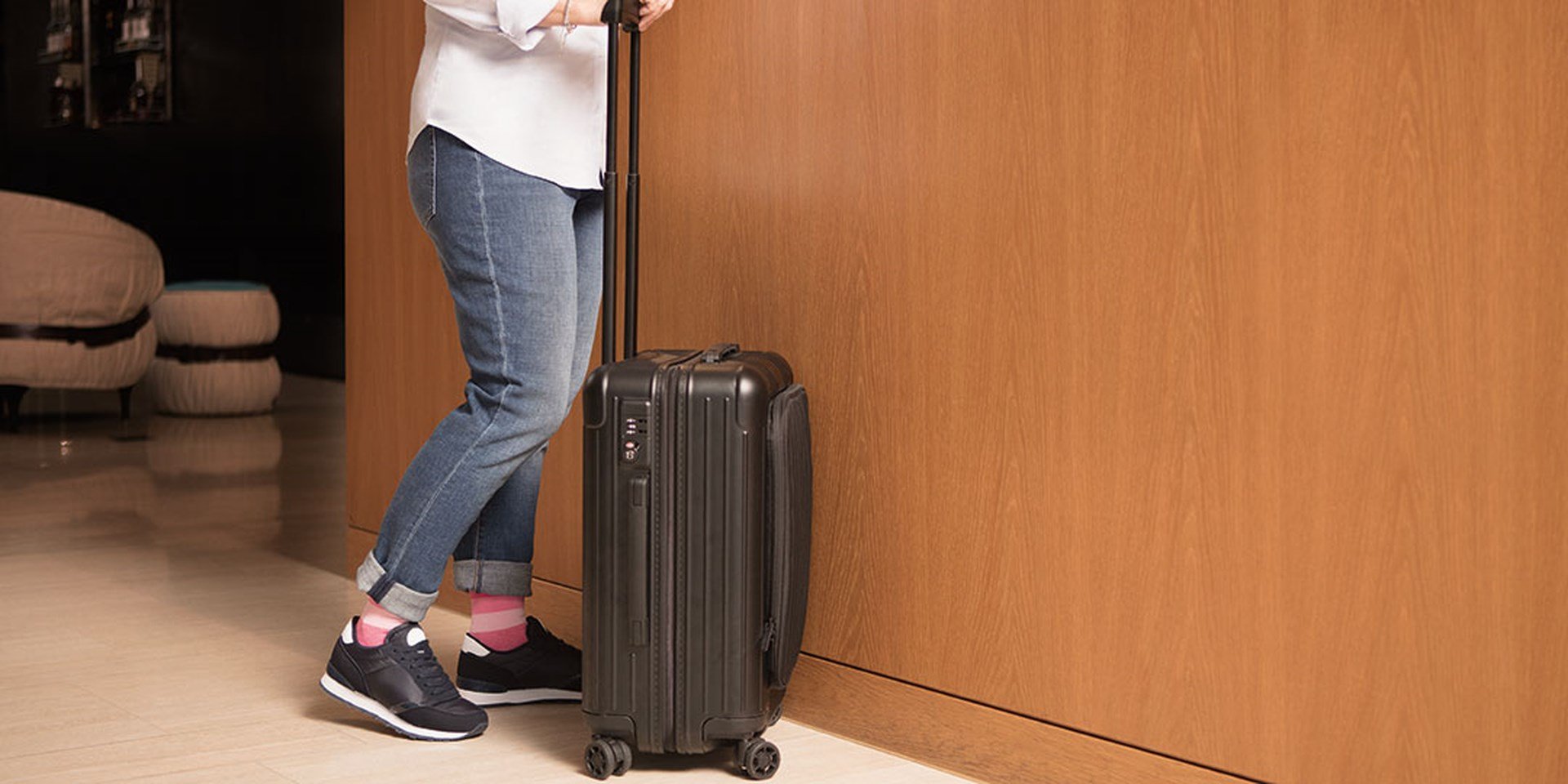How to avoid “economy class syndrome” while traveling
Anyone who travels long distances in a sitting position is at risk for leg complications. Wearing compression socks or stockings can help prevent these problems and will greatly increase your comfort along the way.

Have a light-legged trip!
Whether you travel by plane, train, or car, one drawback of traveling is that it requires you to sit for long periods of time with restricted leg mobility.
This restricted leg mobility can lead to leg symptoms like heavy and tired legs and/or swollen feet, ankles, and legs. In the worst case, it can lead to something called “traveler’s thrombosis,” a serious condition during which a blood clot forms in a deep leg vein.
Read more about potential distress during travel and how compression wear can help keep you safe and comfortable during your next trip.
What is “traveler’s thrombosis” or “economy class syndrome”?
When sitting for long periods of time, the risk of thrombosis increases. This serious condition is also known as “traveler’s thrombosis” or “economy class syndrome” and refers to a blood clot formation in the deep leg veins caused by prolonged sitting with bent legs and restricted leg mobility while traveling by plane, bus, train, or car.
Under normal conditions, the leg muscles serve as a pump system that supports the venous return from the feet to the heart. If leg movement is limited, the activity of the leg muscle pumps is restricted and the blood starts to stagnate in the leg veins. This increases the risk for the development of a thrombotic event. This risk is further increased due to prolonged sitting which leads to a compression of the leg veins.
A DVT can happen to anyone during travel, but certain risk factors like advanced age, heart insufficiency, obesity, pregnancy, intake of hormonal products for contraception or menopause, recent surgeries, and large varicose veins further increase the risk of DVT.
The nasty thing about "traveler’s thrombosis": Symptoms often only occur a few days or even weeks after your trip.
Traveler’s thrombosis is a serious condition that needs immediate medical attention. In the worst cases, blood clots will detach and migrate to the lungs, resulting in a pulmonary embolism (PE), a potentially fatal event.
Compression wear can help prevent leg symptoms, like tired, heavy, and swollen legs, and traveler’s thrombosis.
Risk of developing deep vein thrombosis (DVT) increases when travel extends four hours or more and requires you to remain seated.
Symptom check: Could it be traveler’s thrombosis?
The following symptoms are warning signs for traveler’s thrombosis. However, symptoms vary and they do not all have to occur at the same time.
- Painful and swollen legs and calves
- Skin redness and discoloration
- Locally elevated temperature
A thrombus in a superficial vein usually occurs with inflammation. Symptoms may also appear some time after you’ve completed your trip. If you suspect a thrombosis, please consult a doctor immediately.
Ask your physician for information regarding the prevention of DVT and other venous problems during travel.
What are the benefits of compression wear for travel?
A simple and comfortable way to help relieve the symptoms of heavy, painful, and swollen legs during and after travel is to wear graduated compression stockings.
Additionally, compression wear is recommended in order to reduce the risk of developing more serious conditions such as phlebitis, DVT, or pulmonary embolism during long-distance travel by increasing blood circulation and improving venous return.
Compression stockings have been proven to prevent travel related leg symptoms reliably.
Once you discover the benefits and comfort of compression stockings during travel, you may want to continue wearing them in your daily life.
- Wear comfortable, loose clothing.
- Move your feet and ankles every 30 minutes (10 flexes and 10 circles).
- Drink plenty of fluids to avoid dehydration; avoid alcohol.
- Take a short walk at least every two hours, be it on the plane or train or at a service station.
- Do not cross your legs as this reduces blood flow.
- Wear compression socks or compression stockings to prevent symptoms and swelling.